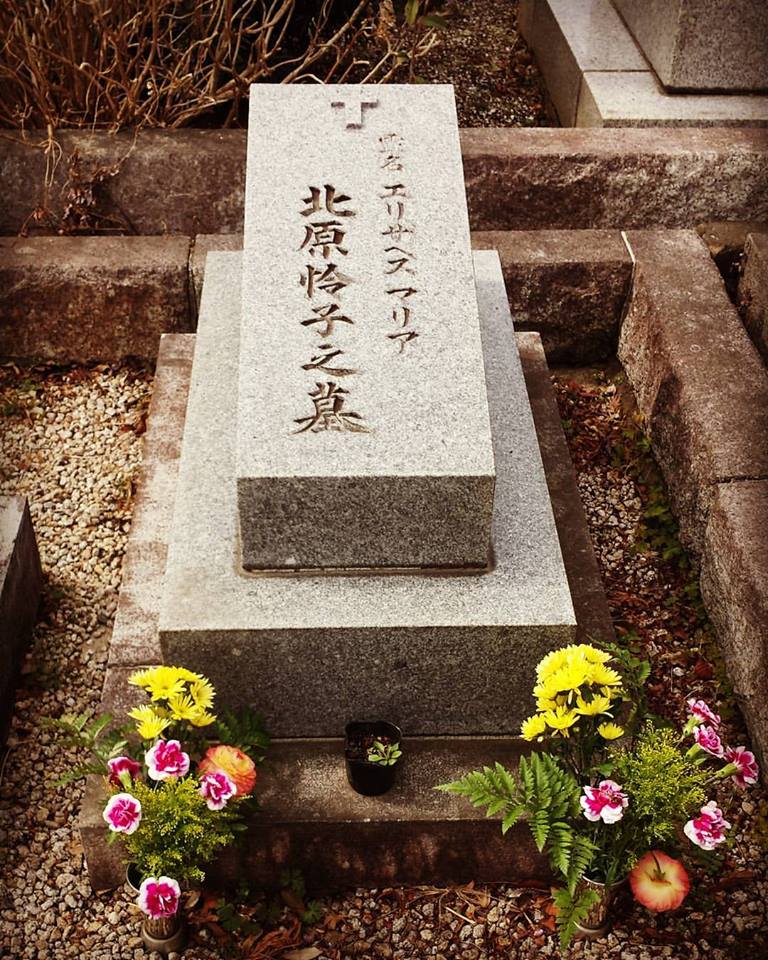Venerable Satoko Kitahara made a promise to use her smile to radiate Jesus’ peace.
Lenten Campaign 2025
This content is free of charge, as are all our articles.
Support us with a donation that is tax-deductible and enable us to continue to reach millions of readers.
Buried deep within the largest cemetery in Tokyo, there is a grave marked with a cross. If you ask for directions to this plot, you’ll be met with confusion and astonishment—how could you, a westerner, have someone to visit in this cemetery? There are no signs to point out her grave, but the woman buried there changed hundreds of lives and may soon be the first Japanese non-martyr ever canonized. And while the clerks never seem to have heard of Venerable Satoko Kitahara (1929-1958), the fresh flowers on her grave make clear that some in Japan still remember Mary of Ants Town.

Like most Japanese (somewhere in the neighborhood of 99.6 percent), Satoko Kitahara wasn’t born Catholic. The daughter of an aristocratic university professor, Satoko was raised Shinto. Though she had a privileged upbringing and enjoyed many luxuries and cultural opportunities, World War II (particularly the surrender of Japan) shattered her sense of safety and left her deeply disillusioned. Like many young Japanese, she wondered in the wake of the War if life was truly worth living.
Satoko sought to drown out the questions that kept her up at night by spending every possible hour at the cinema. Without realizing it, she had embarked on the course that so many people follow: existence as a desperate series of distractions from the agonizing emptiness of life without Christ.
It’s likely that her life would have continued that way but for a chance encounter with a poorly-made statue of the Blessed Mother. In that face, Satoko saw the peace she longed for. She began to ask questions, to seek out Christians. Again and again she saw that Christians seemed to be immune from the inner turmoil everyone else was living. Satoko realized that this was what she’d been searching for and, at 20, she became a Catholic.
On the day of her baptism, a Sister approached Satoko: “You have such a beautiful smile,” she said. “Will you make a promise to Jesus today to smile whenever you can?” Satoko made that promise and her smile brought light to countless lives.
Having fallen in love with Jesus, Satoko longed to be a bride of Christ. She asked one community after another to accept her as a postulant, but always the reply came that she was too ill, having contracted tuberculosis years earlier and been seriously weakened by it.
But God had something beautiful in mind for Satoko, and it began when a companion of St. Maximilian Kolbe, Brother Zeno, met her at random and, in his very broken Japanese, invited her into a new world: the world of the desperately poor.
In the years after the War, Japan’s streets were filled with the destitute. Rather than beg, most Japanese sought work—any work. A few hundred had gathered in a shantytown called Ants Town (in reference to how industrious ants are). These particular people were ragpickers: men, women, and children who go through other people’s trash to find things to sell. They were dirty, they were smelly, they were covered with lice, and Satoko smiled at them and invited them to her home for piano lessons.
For some time, the children came to see the Kitaharas until Satoko had a realization: “I had thought I was a great Christian because I condescended to dole out some free time, helping Ants children with their homework! … It hit me now. There was only one way to help those ragpicker children: become a ragpicker like them!” So the refined aristocrat joined them in the streets, picking through dumpsters alongside them, always with a smile on her face.
This wasn’t enough, though. Souls were being lost because these people couldn’t believe that they truly mattered to God. If they saw how much they mattered to her, perhaps they would believe. She packed a few meager possessions and, smiling, moved to Ants Town.
There, she taught the children, took them on excursions to the country, improved their manners, and, above all, preached the Gospel. Many of the children came to know Christ, and their parents as well. Even the bitter alcoholic who ran Ants Town was eventually baptized.
All the while, Satoko was getting sicker. Her tuberculosis had returned and she was no longer strong enough to get out of bed. Though she felt useless, her people still flocked to her for a kind word or a smile of encouragement. Though it killed her, she would not leave her people, and there she died at only 28, a smile on her face.
Venerable Satoko Kitahara changed the fate of hundreds of souls by walking alongside them with a smile. Let’s ask her intercession for a spirit of joy, that we would be able to love so well that others come to Christ because of the peace they see in us. Venerable Satoko Kitahara, pray for us!









